- 资质:
- 评分:
1分 2分 3分 4分 5分 6分 7分 8分 9分 10分 9.8分
- 印象:
- 经营时间:10年
- 展厅面积:150平米
- 地 区:上海-黄浦-其他
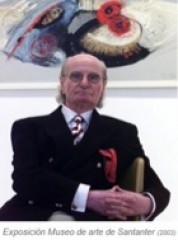
JULIO DE PABLO 在艺搜查询
| 出生年份: | 1917 |
|---|---|
| 籍 贯: | 国外-国外地区 |
艺术简介
Julio de Pablo was born on July 26, 1917 in Revilla de Camargo, Cantabria, Spain and died on June 19, 2009 in Torrelavega, Spain.
He was an artist devoted to painting and drawing. He also worked on ceramics and posters, with the paint where it would stand to develop a personal style. It is considered the dean of Cantabrian painting and a cultural reference distinguished in the region.
Julio de Pablo Pérez was born on 26 July 1917 in Revilla de Camargo, a small Spanish peasant and mining town in Cantabria. In 1919 within a political and economic crisis unprecedented in the country, his family moved to the city of Santander where he lived most of his life. When he was only twelve years old, he began working as an industrial painter to help economically his family. Cause of his passion for art, and despite working, he enrolled evening classes in painting and modeling at the School of Arts and Crafts in Santander, without obtaining any qualification about it, so that its formation was considered self-taught. According to the artist himself his artistic vocation was born to establish contact, 1939, with the work of Agustín Riancho.
In 1942 he married and emigrated to Germany, fleeing economic and political situation in the Spanish war, as harsh as war itself. He lived in Berlin, he worked as a sign painter for Nazi propaganda, putting up posters of Hitler locomotives with Rolling to Victory. This frustrating experience, caused by the war, would return back to Spain after the first year.
In 1947 he held his first exhibition at the Ateneo de Santander. The 27 landscapes that presents are a pictorial proposal that mimics the inner nature full of fantasy. Green and yellow, dotted with silvery gray to make your own naturalistic interpretation.
In 1958 the Museo de Bellas Artes de Santander acquired the painting titled “Dark skies” and in that same year, after successful exhibitions in Santander Lintel and South Chamber galleries, his work out of the capital for the first time. Travel to Paris and Italy, continued to exhibit in Barcelona, Madrid, Zaragoza, Valladolid and Bilbao.
He was selected in 1963 for the Second National Competition of Fine Arts in Madrid and in 1964 in the salon de Mayo VII of the municipal hall of Barcelona.
In 1965 London exhibition picks up the changes in painter since his work in isolation. The final effect of grey, in combination with white, is a bleak sadness and to compensate the melancholy that produces, the painter situated in wide curved horizons hope: there is life in those black or white stripes that remind us of houses, boats, distant villages. His painting always revolves around the landscape and nature.
In 1981 and 1982, he exhibits in France, the Cognac Museum and the Centre Cultural de the House of Goya, Bordeaux, respectively (ten years later repeated with new works). Their participation in the literary Cabinet of Las Palmas de Gran Canaria (1984) shows a collection of numerous gouaches of the painter. Special mention also their ceramics reflecting this evolution towards the nakedness of their works, which are stripped of the accessory.
MUSEUMS AND BIG COLLECTIONS:
• Museo Nacional Centro de Arte Reina Sofía, Madrid
• Museo de Cognac, France
• Museo Palacio de Guinea Ecuatorial
• Museo de Bellas Artes de Santander
• Museo de Alto Aragón de Huesca
• Museo Marítimo de Santander
• Palacio de Elsedo, Pámanes, Cantabria
• El Molino, Puente Arce, Cantabria
• El Riojano, Santander
• Fundación fray Bernardino, Sahagún, León
• Diputación Regional de Cantabria
• Museo Pictórico de Barril, Murcia
• Museo Castillo de San José, Lanzarote
• Museo Camón Aznar, Zaragoza
• Ayuntamiento de Santoña, Cantabria
• Ayuntamiento de Camargo, Cantabria
• La Casona de Tudanca, Cantabria
• Ateneo de Santander
• Real Club de Regatas de Santander
• Torre de Don Borja, Fundación Santillana, Cantabria
• Museo Casa de Colón, Las Palmas de Gran Canaria
• Parlamento de Cantabria, Santander
EXPOSICIONES INDIVIDUALES
1947 • Ateneo, Santander
1951 • Real Club de Regatas, Santander
1954 • Sala Sur, Santander
1955 • Galería Dintel, Comillas, Cantabria
1957 • Sala Vayreda, Barcelona
• Galería Dintel, Santander
1958 • Sala Sur, Santander
• Sala de Cultura, Reinosa, Cantabria
1961 • Sala Sur , Santander
1963 • Galería Prisma, Madrid
1964 • Sala de la Escuela de Bellas Artes, Salamanca
• Sala de la Caja de Ahorros, Valladolid
• Sala Illescas, Bilbao
• Sala Sur , Santander
1965 • Knibss Gallery, Londres
• Sala Sur, Santander
1966 • Sala Sur, Santander
1967 • Sala de la Escuela de Bellas Artes, Salamanca
• Sala de la Caja de Ahorros, Valladolid
1968 • Sala Sur, Santander
1969 • Galería Edaf, Madrid
• Sala Sur, Santander
1970 • Universidad Internacional Menendez Pelayo, Santander
1971 • Sala Sur, Santander
1972 • Real Club Náutico de Gran Canaria
• Galería Zero, Valencia
• Sala de la Editora Nacional, Barcelona
• Sala Besaya, Santander
• Galería Mouro, Santander
1973 • Galería Edaf, Madrid
• Sala de la Caja de Ahorros de Salamanca
• Galería Trazos, Santander
1975 • Sala Provincia, León
• Sala de la Casa del Siglo XV, Segovia
• Galería Arco del Valle, Orense
• Galería Souto, Orense
• Galería Zero, Murcia
• Galería Piquío, Santander
• Galería Rúa, Santander
1976 • Galería Zero, Murcia
• Sala Ayer y Hoy, Alicante
• Galería Columela, Madrid
• Galería Piquío, Santander
• Sala Victor Baijo, Zaragoza
1977 • Galería Murillo, Oviedo
• Galería Uranga, Bilbao
• Museo Alto Aragón, Huesca
1978 • Sala de la Caja de Ahorros de Antequera, Malaga
1979 • Galería Dintel, Santander
• Sala Gastón, Zaragoza
1980 • Casa de la Cultura, Burgos
• Ayuntamiento del Real Valle de Camargo, Cantabria
• Galería Rúa, Santander
• Museo Municipal de Bellas Arte, Santander
• Galería Dintel, Santander
• “Julio y Gloria “ , Casona de Tudanca, Tudanca, Cantabria
1981 • Centro Cultural de la Villa, Madrid
• Galería La Kabala, Madrid
• Museo de Cognac, Burdeos, Francia
• Sala Besaya, Santander
1982 • Centro Cultural de la Casa de Goya, Burdeos, Francia
• Galería María Blanchard, Santander
1983 • Galería María Blanchard, EL Arte y el Hoy
1984 • “Caprichos de Julio de Pablo “ Gabinete Literario. Las Palmas de Gran Canaria
• “39 Obras más recientes “ Museo Municipal de Bellas Artes, Santander
1985 • Semanas Culturales Palacio de Comillas, Exposiciones y taller junto a Gloria Torner
• Sala de Arte Torrenueva, Zaragoza
1986 • Colegio Oficial de Arquitectos, Santander
1987 • Sala de Exposiciones de Efe, Madrid
1988 • Galería Zurbarán, Santander
• Sala Espí, Torrelavega
• “Mariposas al Viento “, Serigrafías
• Galería Zurbarán, Santander
1989 • Caja de Madrid, Zaragoza
• Galería de Arte La Cúpula, Valencia
• “4 Puntos de Vista “ Sala María Blanchard, Santander
1990 • Museo Municipal de Cognac, Francia
• Galería Cervantes, Santander
1991 • Galería Cervantes, Santander
1993 • Galería Cervantes, Santander
1994 • Galería Cervantes, Santander
1996 • “Julio de Pablo. Obras 1947 – 1996 “, Fundación Marcelino Botín, Santander
1997 • Pasado al Presente “, Centro Cultural la Vidriera , Camargo, Cantabria
• Galería El Cantil, Santander
2000 • Galería Catalonia, Barcelona
2003 • Museo de Bellas Artes, Santander

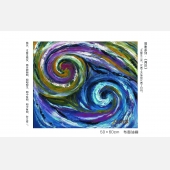 庞明璇
庞明璇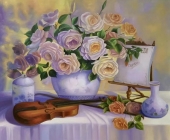 未知
未知 郑霞娟
郑霞娟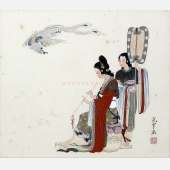 吴光宇
吴光宇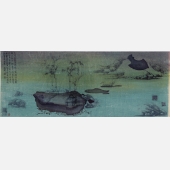 王霄
王霄 王轶琼
王轶琼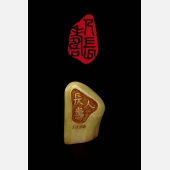 陈维廉
陈维廉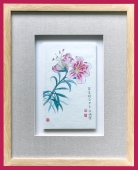 赵映璧
赵映璧




